At Ranwar, at the main square there used to be a well. A friend of mine, Rodney, used to have drinks in his house, and then from the first floor, he'd dive straight into the well.
Memory Keepers Of Bandra is a project that documents oral history of the senior generation who live or have lived in Bandra, Mumbai. Through their lived experiences, it pieces together history, geography, culture and community, and offers an insight into the neighbourhood.
This is in memory of Bandra’s wells.
Some years back, while wandering around the St Stephen’s Steps in Bandra, I noticed a sign board. It said Welcome To Sarkari Bowdi and had the Bandra pincode on it. I wondered what it was.
Then it struck me. Agrasen Ki Baoli in Delhi, Rani ki Vav in Patan. Vav, Baoli, Bowdi. Words for a well or a step well.
And it made sense. There are fresh water springs in Bandra. In fact during the Portuguese occupation of Bandra, the fort is supposed to have been a place where ships/dhows stopped for fresh water.
Couple of months back, when I first went to document Tucky (Christopher) Curzai, I met him in his office. And right above his desk was a map of Bandra, which had all the wells marked out. That morning we spoke about the reclamation, and his memories of Bandra, and just as we were ready to wind up, I asked him if he remembered any of the old wells.
His eye lit up, and he started to describe all the wells, where they were, how deep, how wide, and all his memories of those wells. Anirban who was helping me record, turned to me when we left Tucky's office and said, 'It felt like Tucky had a map of the wells in his head.’
I used to swim in a well in Almeida park. My dad was the best man for Hernie Almeida. Every holiday we used to go there, have a good swim and lunch. Very often he used to clean out the well, so we used to pump out all the water, brush the sides of the well and fill it up again. It had a very good spring as the source, it used to fill very fast. Fortunately he didn’t block it, he covered it, so he still gets water. There's a building there now, but the well is till there. That's where I first started swimming.
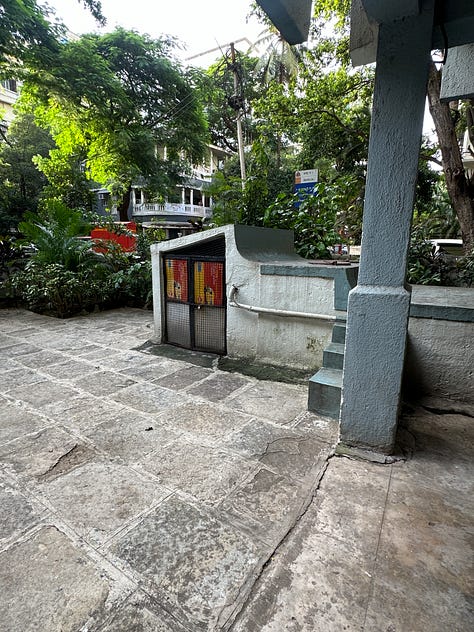


A few days ago, I asked Tucky if he would point out some of the wells to me. And that’s how one afternoon, Tucky, his son Gary, and I went around Bandra on two scooters, looking for all the wells Tucky spoke about.
After I started swimming, by the side of our house we had a square shaped well, at Chapel Road. That was just one field away from us. I used to swim there very often. We used to go for a swim at the Sarkari Bawdi also. It's still there, it's a very deep well. It's about 100 feet deep. All of us boys used to walk there and swim. I think its the deepest well in Bandra. Then at the bottom of the Mount Mary steps there was another well. A lot of people died there.
Then Nirmala colony, Carmel Cooperative, Rose Minar, they all had wells. At Waroda road, there was a well. At Ranwar, at the main square there used to be a well. A friend of mine used to have drinks in his house, and then from the first floor, he'd dive straight into the well. Then further up near Stanislaus there was a nice well. We enjoyed all of them. There was one near Supari Talao, after football we would go straight and dive into the well.
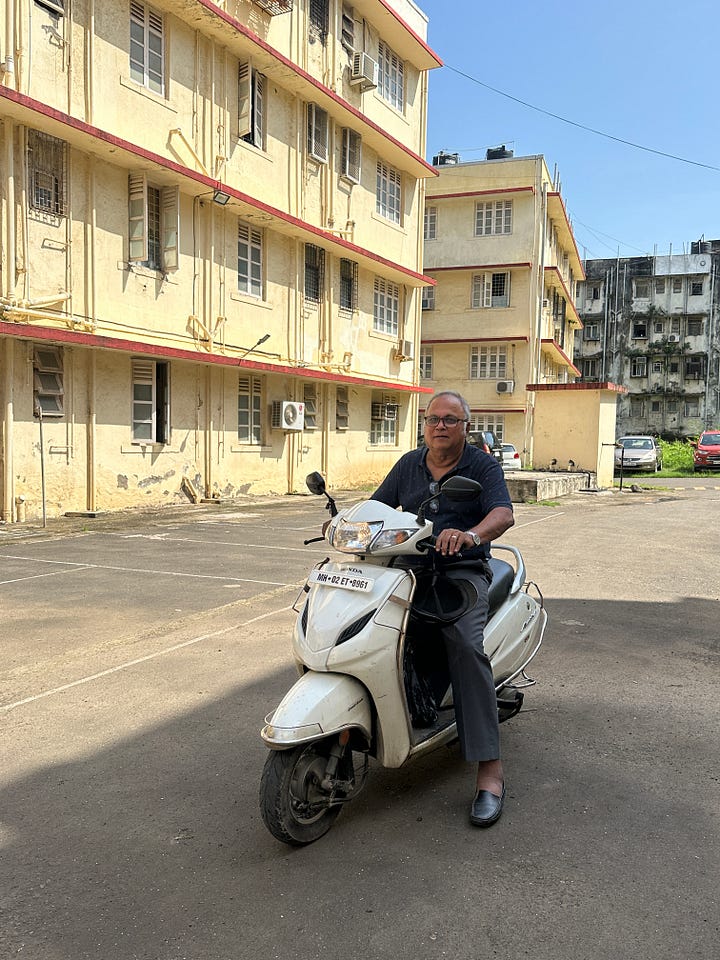


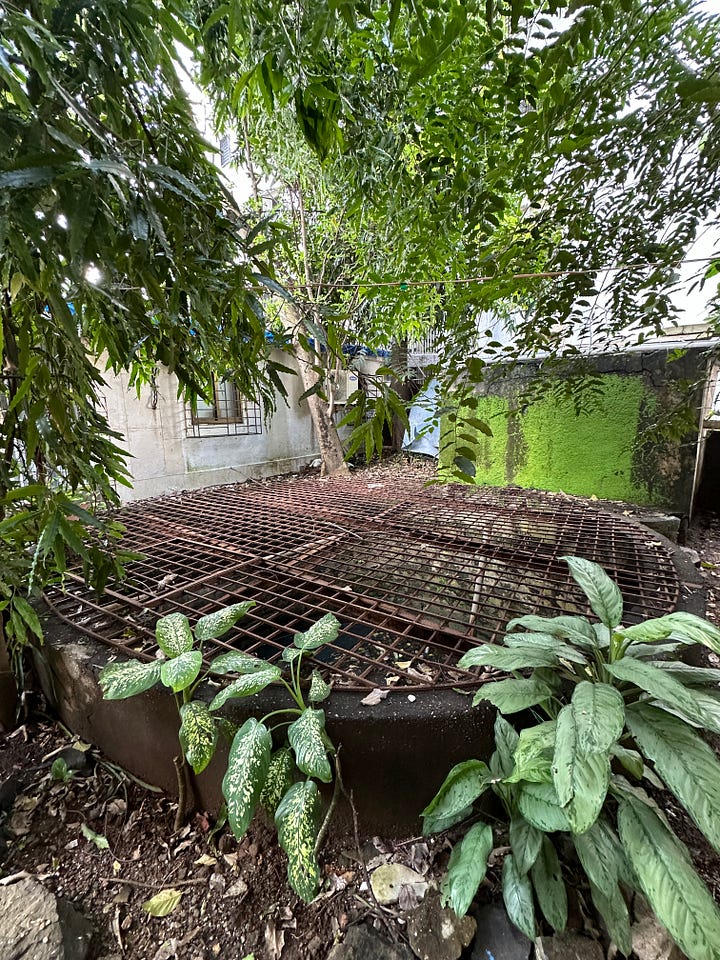
(Top left - Tucky at Nirmala Colony, Top right - The well at Ranwar, Bottom left - The well at Rose Minar, Bottom right - The well at Waroda Road )
For those who are too lazy to read, you can also watch Tucky talk about swimming and diving into the various wells in Bandra.
There's also the dark side to these wells. I read a blog on Bandra from 2014, by Michael Synder. Here’s an excerpt from his blog.
Back in the Rachana Compound at Somnath Lane, behind an old chawl and next to a pair of ugly concrete highrises that came up some 30 years ago, Donald showed me a broad, stone well, the roots of an overhanging peepal streaming down its eastern flank into a stagnant pool of pale grey water. “In the monsoon the water comes up so high and people would come back from playing football on the fields and run and jump in to wash off,” Donald said, “but there’s a rock there, below the surface, and 10 or 15 people dove in and hit their heads and sank to the bottom. There was all this muck down there so they would get stuck, and they’d have to use hooks to pull the bodies out,” he went on. “One time we had to get an army commander to come in when the hooks didn’t work and he dove down twice—the first time he couldn’t do it—and pulled the body up by the hair. That was in 1975.
I wrote to Michael and he says he’s not sure how much of what was told to him was factually correct or hearsay. But when Tucky and I went to the well at the Mount Mary steps, an elderly man there said a number of people had drowned at that well, by accident or not.
I guess the time for throwing caution to the wind and jumping into wells is over, which is why most of them are now covered or boarded up, though water is still pumped out of some of them.
But what remains, are the freshwater springs, buried in the hills of Bandra. Maybe someday we'll file them under things that were lost, but we reclaimed them.
Thank you for reading this. Leaving you with something I like. A building name that’s connected to the history of Bandra. Sea Spring building on Bandstand, which was built in 1978, on its website states that it derives its name from fresh water springs that run below the surface and trickle through the rocks, on the shore, into the sea.

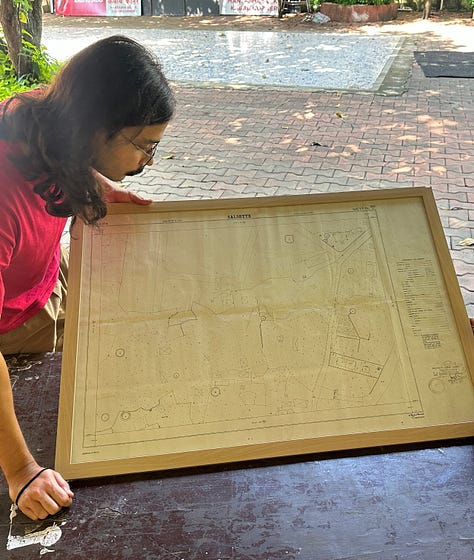
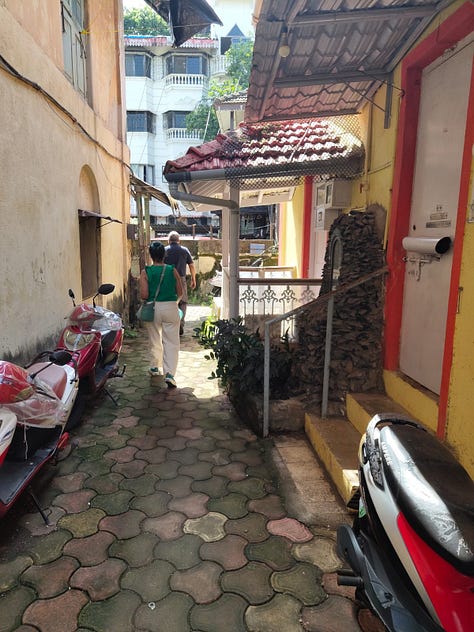
Thank you Tucky and Gary, for the enthusiasm and for a super afternoon, tracing some of the wells. And just in case you missed the previous article where Tucky talks about Bandra before the reclamation, here’s a peek.
When the living was easy
All my youth I spent in the sea. My cousin and me used to take the boat across to Mahim, have a cup of tea, or row to Dadar, and then have a swim in the middle.






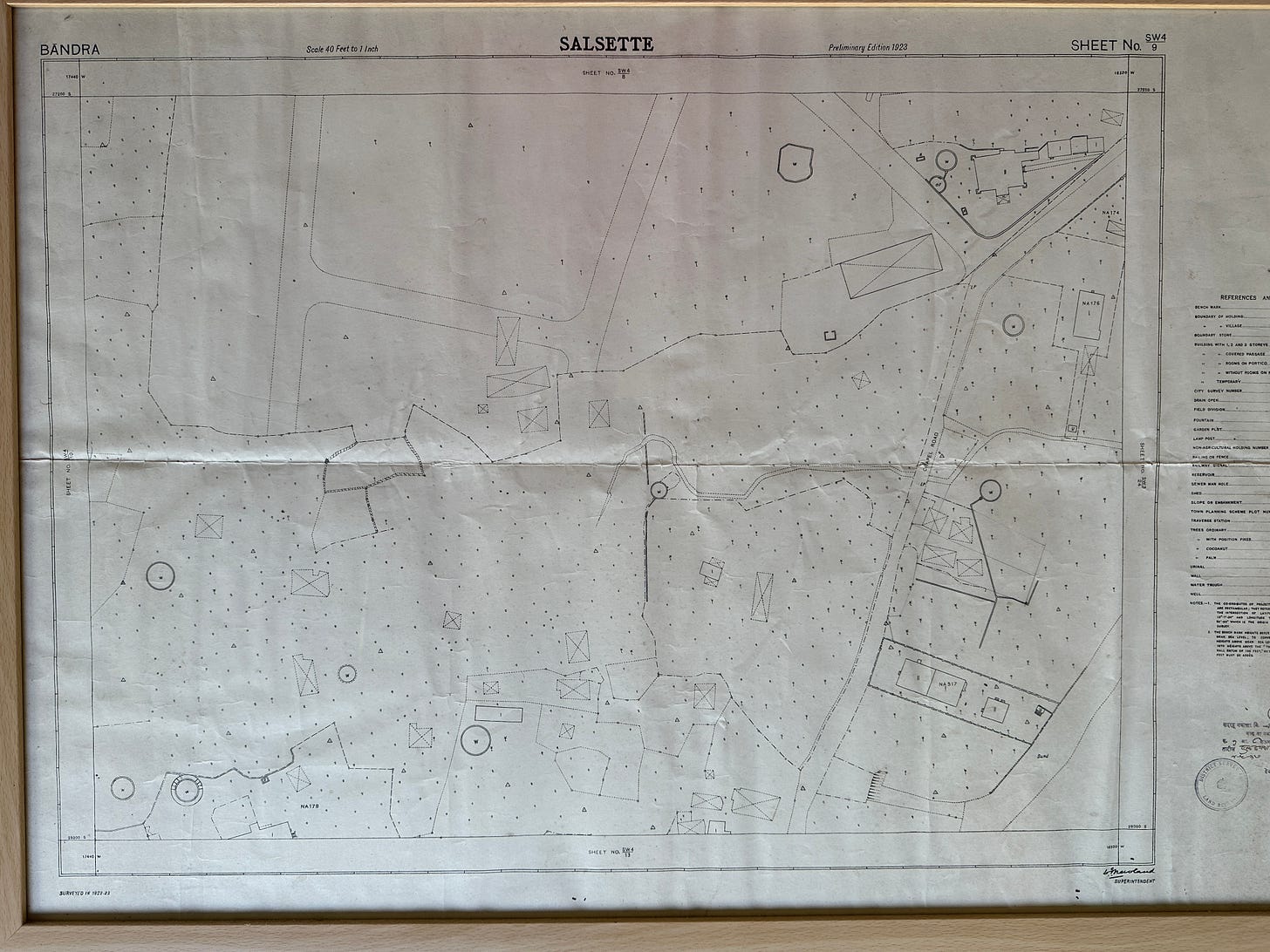

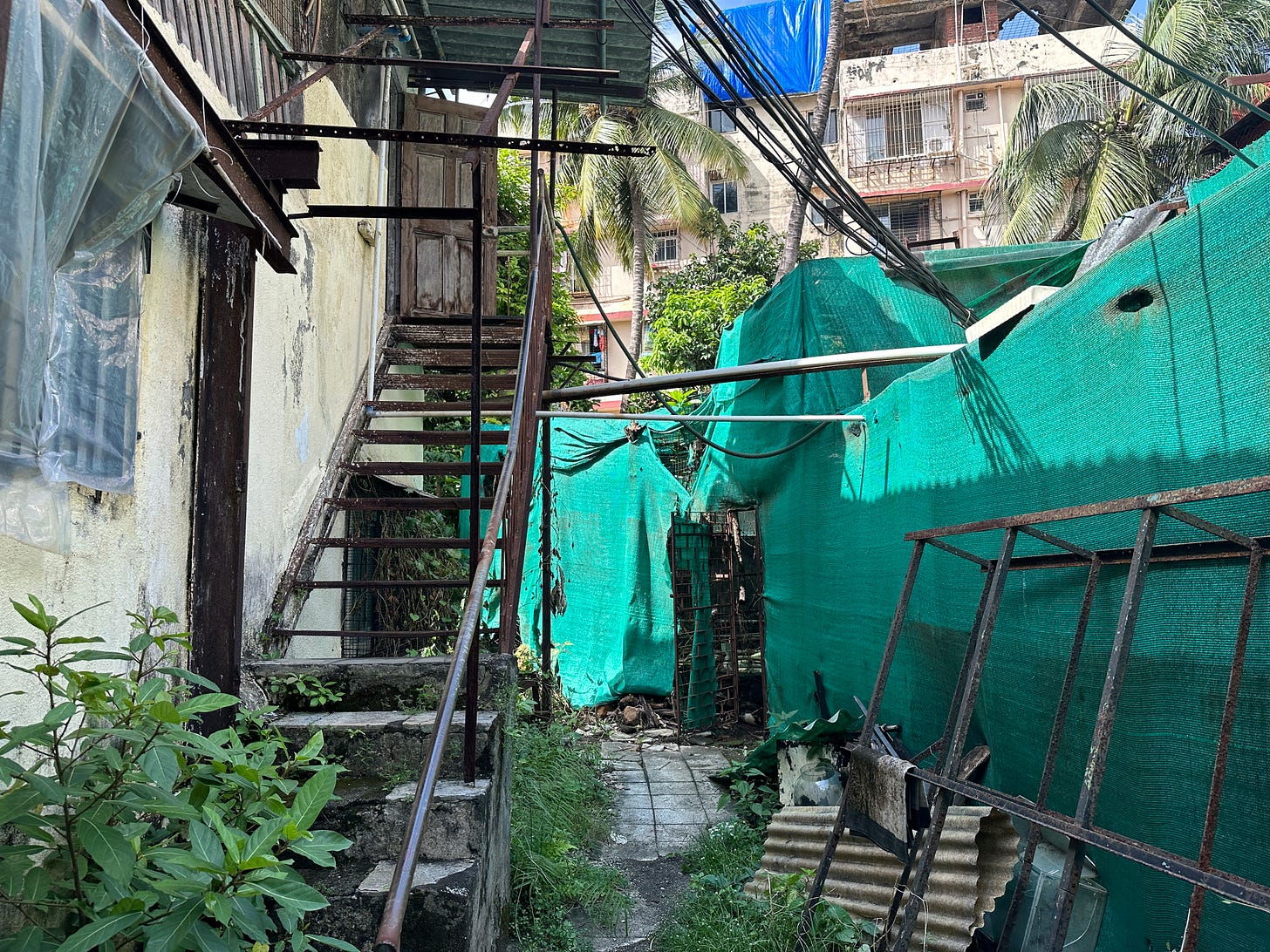

My name is Asif Dossal. We had a house in apostolic Carmel convent on hill road one of the oldest and biggest well was in our compound behind our house but the Nuns closed it down with trucks and trucks of rubble in stead of covering it. That is where the big boys would dive in and swim and the small boys like me then were taught swimming Good memories I am talking of the 60s and seventies 👍🏽🙏🏽
There was a well at the back of St.Josephs primary school.